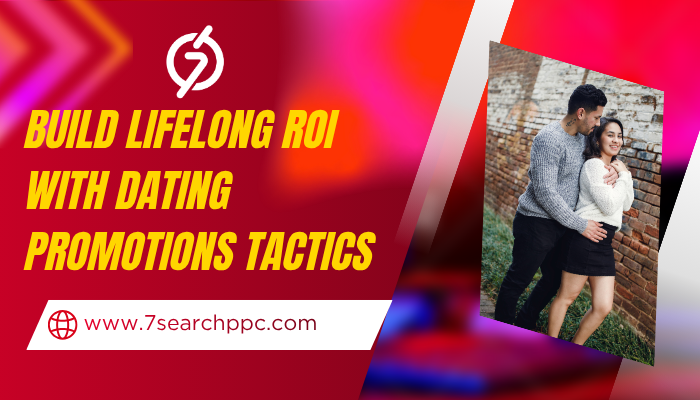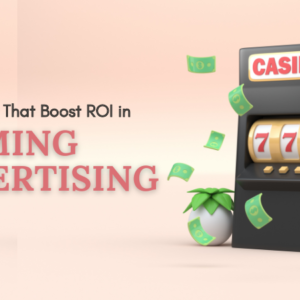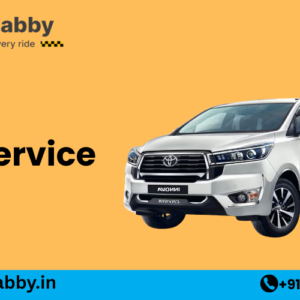Why ROI Now Lasts Beyond Clicks
Online dating has evolved into one of the most competitive advertising categories. Brands are spending aggressively to capture hearts and sign-ups, but only a few campaigns deliver consistent long-term ROI. According to recent data from Statista, the global online dating market is projected to surpass $11 billion by 2028, yet cost per acquisition (CPA) in this space continues to rise year after year. For advertisers focusing on Dating Promotion, this means one thing—your tactics must go beyond simple visibility and aim for sustainable, lifelong ROI.
The reality is, many advertisers get stuck in a short-term mindset. They optimise campaigns for quick conversions instead of lifetime engagement. But with audience fatigue, privacy regulations, and platform competition growing, those days are over. Today’s dating advertisers need to think strategically about value longevity.

Understanding the Advertiser’s Pain Point
The main challenge advertisers face in the dating vertical is balancing cost and commitment. Running a dating promotion campaign means you’re not just trying to generate a sign-up—you’re nurturing intent. Users browse, hesitate, compare, and often delay decisions. Without advanced data-driven tactics, advertisers waste budget chasing users who never convert or don’t stay long enough to justify the ad spend.
For example, an advertiser might run multiple online dating advertisements targeting various age groups and locations, but without layered targeting or behavioural segmentation, they end up paying for low-quality clicks. The result? Weak ROI and inconsistent results despite increased budget allocations.
Advertisers often overlook that dating audiences are emotionally driven. A simple headline tweak, creative shift, or timing adjustment can alter campaign outcomes dramatically.
Why Emotion Meets Algorithm in Dating Ads
One unique characteristic of online dating promotion is its dual nature—it’s both emotional and algorithmic. While creativity and messaging appeal to human emotion, your campaign’s sustainability depends on how well algorithms learn from user interactions.
Smart advertisers use emotion to attract and algorithms to retain. This combination forms the backbone of lifelong ROI. By analysing ad engagement data—click patterns, scroll depth, or even app uninstalls—you can map user intent stages and serve personalised creatives that match their mindset.
For example, consider the difference between promoting “Find Your Match Today” versus “Meet Genuine Singles Who Share Your Goals.” The second message targets long-term intent, helping filter serious users from casual browsers. The result is lower churn and higher user lifetime value.
Building Lifelong ROI Through Advanced Promotion Tactics
Segmentation Beyond Demographics
Traditional demographic targeting—age, gender, and location—isn’t enough anymore. Lifelong ROI starts with behavioural segmentation. Focus on audience actions, app engagement frequency, and interaction patterns to deliver ads that align with specific relationship intents.
For instance, segmenting users who revisit your site multiple times but don’t convert yet shows they’re interested but hesitant. Craft retargeting campaigns with personalised offers or trust-building content like “verified profiles” or “real success stories.” This builds credibility and encourages them to act.
Retargeting That Feels Personal
Advanced dating promotion tactics leverage emotion-led retargeting. Instead of generic “Come Back” banners, use message sequencing. The first retargeting ad might highlight security features, while the next one showcases user success rates or testimonials.
Dynamic creative optimisation (DCO) tools can automate this process by testing different creatives and calls-to-action (CTAs) to see what drives actual re-engagement. Over time, your ad algorithm learns what emotional triggers convert best for each audience segment—creating compounding ROI over the long term.
Data-Backed Creative Rotation
Ad fatigue is real, especially in the dating vertical where imagery and tone play a vital role. Advanced advertisers rotate creatives not just weekly, but based on engagement data. Track click-through rates (CTR), conversion frequency, and dwell time per creative type.
Run A/B tests between casual and serious themes—some audiences respond better to friendly, casual connections, while others prefer relationship-oriented messaging. Continually refine creative sets and measure performance at scale. This continuous refresh keeps your ads relevant and improves ROI durability.
AI-Powered User Journey Mapping
AI tools can now predict potential user drop-offs before they happen. Using predictive analytics, advertisers can identify when a user might stop engaging with your funnel and trigger a pre-emptive personalised ad or email to re-engage them.
For example, if a user signs up but doesn’t complete their profile, an AI-driven campaign could serve a creative saying, “Complete your profile to meet 3 perfect matches today.” These gentle nudges, powered by intelligent targeting, boost conversion rates and user lifetime engagement—directly influencing ROI longevity.
Budget Allocation for Intent-Driven Stages
Another overlooked tactic is intent-stage budgeting. Don’t distribute your ad budget evenly across all channels. Instead, allocate more funds to the stages that yield the highest lifetime return.
Top-of-funnel ads build curiosity, while mid-funnel content nurtures interest through education or emotional storytelling. Bottom-of-funnel campaigns—like retargeting and referral offers—convert and sustain engagement. By budgeting based on intent rather than traffic, you ensure your investment compounds over time instead of flattening after initial conversions.
Strategic Focus Brings Sustainable Growth
It’s easy to get tempted by immediate results—especially when cost metrics like CPC or CPA look good on paper. But advertisers who consistently win in online dating promotion focus on deeper goals: retention, engagement, and satisfaction.
Think of ROI as an evolving cycle, not a single result. The longer a user stays active, the more valuable your original ad spend becomes. Smarter advertisers blend creative intelligence with data learning—ensuring that even after the click, the relationship between user and brand continues.
If you’re ready to explore smarter approaches and want to learn how to Promote Dating Site To Get More Customers, there’s a structured path to follow. You’ll find proven steps and insights to boost ROI without overspending.
What the Best Dating Campaigns Do Differently
Successful dating advertisers treat campaigns like relationships—they build, test, listen, and adapt. Let’s look at what sets them apart:
- They use data storytelling. Instead of pushing features, they narrate outcomes. Stories of real matches, emotional wins, or shared interests connect deeply with audiences.
- They optimise time-of-day targeting. Late-night and weekend engagement rates are often higher, but smart advertisers balance frequency to avoid oversaturation.
- They humanise automation. Automated responses or chatbots still feel personal because they use conversational tone and empathy.
- They link brand trust with social proof. Real user reviews and success metrics displayed in creatives improve ad credibility and long-term ROI.
These behaviours show that advanced tactics are not about complexity—they’re about empathy guided by intelligence.
The Long-Term Payoff of Smart Dating Promotion
When executed strategically, dating promotion campaigns can yield exponential value. Retained users generate free advocacy—word-of-mouth, reviews, and social engagement—all of which reduce paid acquisition dependency.
More importantly, as algorithms evolve, your campaign data feeds future efficiency. The longer your campaign runs effectively, the smarter your system becomes at identifying profitable audience segments. It’s this feedback loop that transforms campaigns from transactional to lifelong ROI machines.
Consistency in brand message, coupled with data-informed targeting, ensures every rupee spent continues to work for months after the campaign ends.
If you want to explore specialized ad networks that align with advanced targeting options, you can check out this resource on dating promotion. It’s built for advertisers who want deeper performance visibility and control.
Conclusion
The future of Dating Promotion lies in precision, empathy, and adaptation. Advertisers who treat their audience as evolving individuals—not clicks—see higher engagement, stronger retention, and a self-sustaining ROI.
By combining creative messaging, AI insights, and behavioural segmentation, you can design a campaign that doesn’t just deliver sign-ups—it builds loyal users who stay and engage.
If you’re ready to take the next step, you can create a dating promotion campaign right away. Start building the kind of promotion that turns every click into a lasting connection—and every campaign into a compounding ROI engine.


